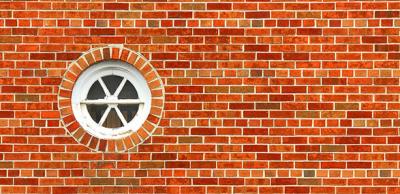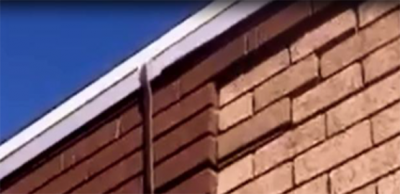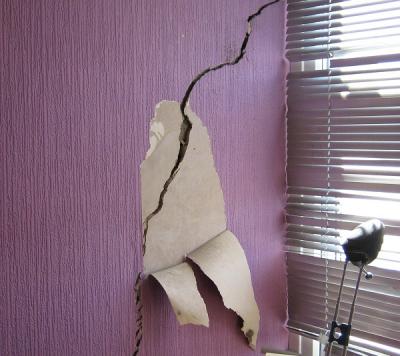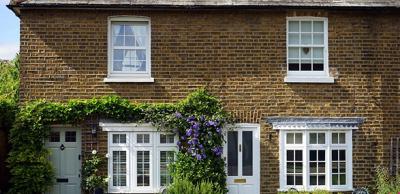Retaining wall basics
Retaining walls can be tricky to build as they need to be strong enough to resist horizontal soil pressure where there are differing ground levels.
One of the things you must get right is the thickness of the wall. It should be at least 215mm thick and bonded or made of two separate brick skins tied together.
This should be enough in most cases with minimal water pressure or where the ground level difference is less than a metre.
You also need to consider the effect of ground water, which can create huge pressure on the wall and soak the brickwork if allowed to accumulate behind. Create a way out for the water by adding a gravel trench and pipes through the wall.
If not properly constructed, water can also penetrate the brickwork structure from above through the mortar joints, affecting the long-term durability of the retaining wall. So add brick copings, which must always be F2, S2 (frost-resistant low soluble salts), with an overhang and drip groove to minimise water damage.
Important points about retaining walls
- Don't forget to include movement joints in the wall and use piers on either side to increase strength at the movement joint position.
- If you're using two separate brick skins in stretcher bond, you have to provide reinforcement by tying them together. Use stainless steel bed-joint reinforcement every third course to boost the strength.
- Use a high-bond damp proof course below the capping/coping and sandwich the DPC in mortar.
- Waterproof the retaining side of the wall and allow water to drain away from this side through weep holes/pipes.
- Slope paving away from the wall and provide gravel drainage strips where possible.
- Don't forget to protect waterproofing from damage while you’re building.
- Don't build higher than one metre without involving a structural engineer.
Want to find out more about this type of work? Visit these links:
- Brick Development Association
- The do's and don'ts of freestanding brick walls
- The danger of free-standing walls
- Wall repair basics
- How to get it right: Supporting joists on external walls
Please Note: Every care was taken to ensure the information was correct at the time of publication. Any written guidance provided does not replace the user’s professional judgement. It is the responsibility of the dutyholder or person carrying out the work to ensure compliance with relevant building regulations or applicable technical standards.
Sign up to the building bulletin newsletter
Over 48,000 construction professionals have already signed up for the LABC Building Bulletin.
Join them and receive useful tips, practical technical information and industry news by email once every 6 weeks.
Subscribe to the Building Bulletin





Comments
Building Regs for Retaining Wall
Submitted 5 years 3 months ago
Reply to: Building Regs for Retaining Wall
Submitted 5 years 3 months ago
The construction of retaining wall that is not associated with a building is unlikely to be controlled under the building regulations.
Your local building control team will be able to confirm whether this is the case. You can find their contact details here: https://www.labc.co.uk/your-local-council-building-control-department — simply enter your postcode and click 'Search'.
Kind regards,
Dalila, LABC
Retaining wall tipping, building new one next to it to support
Submitted 4 years 11 months ago
Reply
Submitted 4 years 11 months ago
You would need to speak to a private consultant who'll be able to give you advice on the best way to proceed.
Kind regards
Barry, LABC
Garden slope
Submitted 4 years 11 months ago
Reply
Submitted 4 years 10 months ago
Building regulations only cover the building fabric not the surrounding environment. I therefore have to advise that there are no standards that I am aware of or controls that can be exercised in relation to the garden levels that you describe.
Kind regards
Barry, LABC
Garden Retaining Wall on Sloped Site
Submitted 4 years 9 months ago
We are looking at building a garden retaining wall at a height of 1.9m (this is the current ground level) & it will be 6m back from the house.
We have been advised that the Base of the wall will need to start 2.5m back from where the face of our 1.9m wall will be.
Is this correct & how will the wall need to be constructed as we have been told that any retaining wall over 1.685m cannot be made of standard construction but must be reinforced.
Hope you can help & any advice that you can give would be most appreciated.
David.
Reply
Submitted 4 years 9 months ago
The design of the retaining wall will depend on various factors, including ground conditions, drainage, length/height of wall, etc..
Because of its height it is likely that the design would be one which incorporates reinforcement to link the foundation of the wall and the retaining wall itself.
It is not really possible to give general advice, simply because of the differing factors to consider, however if the wall is to retain any part of a building, the works will require consent under the provisions of the building regulations and you should check this with your local authority building control team.
As far as the design is concerned, you are advised to seek expert advice from a structural engineer. It is likely the cost of their time will be offset by providing you with the most cost effective retaining wall design.
For your reference, here is a link to the Institute of Structural Engineers - https://www.istructe.org/find-an-engineer/
Many thanks,
LABC
Neighbour no retaining wall.
Submitted 4 years 8 months ago
Exercise Pool
Submitted 4 years 8 months ago
I have an end town house with 2-3m high Gabion retaining wall, 3.5 m from the side of the house.
I’d like to install an exercise pool which would hold around 5000 litres, and would be 2 m from the gabions - is this too much stress?
There are 2 options for resistance - a countercurrent or a tether. Would a counter current unit cause too much vibration.
Just looking for an answer in principle - won’t spend on a structural engineer if it’s just not possible.
Thanks.
Add new comment